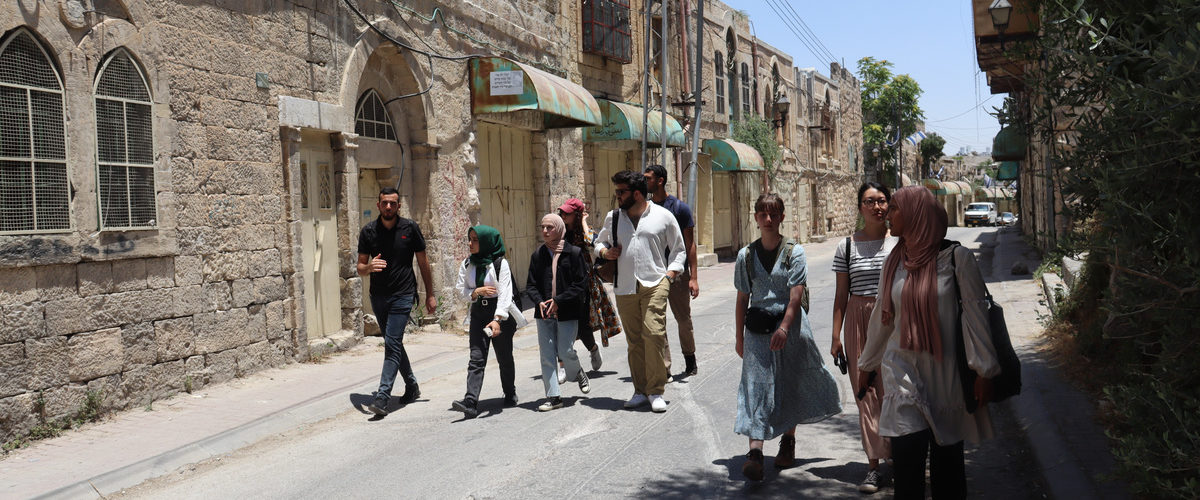Traveling Inside Palestine – Due to the small size of Palestine and the restrictions placed by the Israeli occupation on freedom of movement within the Palestinian Territories, taxis are the more reliable mode of public transport to travel in Palestine. There are no public railways, metros, trams or public buses in the West Bank and Gaza as there are in Israel.
Table of Contents
What mode of transportation do Palestinians use the most?
Palestinian taxis are divided into three main types: Firstly, as in most countries, private taxis travel both between and within cities, and to and from particular locations of the passenger’s choice. The second type are shared (yellow ‘service’ minivan) taxis which travel within cities and which will generally travel to and from a particular location of your choice.
Both of these types of taxis one can hail in the usual manner, by waving your arm at the side of the road and informing the driver who stops of the place you want to go.
Thirdly, there are also to-share (yellow ‘service’) taxis which travel between cities. These shared taxis arrive in and from depart from main taxi stations only. Like shared taxis which travel only within cities, intercity taxis have no set schedule. This type of taxi tends to depart only when the taxi is full.


Are Palestinian taxis able to access Israel?
Shared (‘sherut’) and private (‘munit’) taxis are available in Israel as well as in Palestine. However, while Israeli taxis are able to travel freely between Israel and Palestine, Palestinian taxis do not have the permission to access to Israel – another circumstance of the occupation. Visually, the difference between the two is that the Palestinian taxi is yellow with a white number plate, while Israeli taxis are white with a yellow number plate.
Taxis’ meter system in Palestine and Israel
Taxi services in both Israel and Palestine do not function on a meter system, so it’s important to have an idea of the fair price for your trip. As a tourist, it’s likely you’ll not to know the fair price of a ride, and might, therefore, end up being asked to pay more by your driver. It’s important to be ready to barter with the driver if you think you’re not getting a fair price, even if it feels unfamiliar or uncomfortable.
Is it cheap to take a taxi in Palestine?
Intercity shared taxis are the cheapest mode of transport in Palestine because they offer the least control over travel for passengers. Prices vary according to the destination, as well as the length of the journey. An intercity shared taxi from Ramallah to Hebron should cost around 28 NIS (8$) and Ramallah to Nablus should cost about 20 NIS (6$). Hebron to Bethlehem should cost 16 NIS.


What is the price of taking a private taxi in Palestine?
Private taxis, on the other hand, are much more expensive than shared taxis. A private taxi to Bethlehem from Hebron should cost around 80NIS. A private taxi is a good option for a day trip to a particular area, especially if sightseeing spots are far apart, as a car would therefore be useful for the entire day. Private taxi drivers often offer this touring service, but bartering, again, is a strong possibility and recommendation.
Another benefit of private taxis is that many run after seven in the evening when most shared taxi services close. There are also still some private taxis on Friday, which is the Muslim holy day when shared taxis are hard to come by. Similarly, in Israel bus services and shared taxis are rare or unavailable during Shabbat on Friday evenings and Saturdays.
Final Remarks
When planning to travel in Israel and Palestine, bear in mind that the majority of shops, cafes, restaurants, and tourist spots are closed on Fridays and that the Shabbat affects the opening hours of some Israeli organizations and institutions. Such preparation will ease your travel concerns while here.

